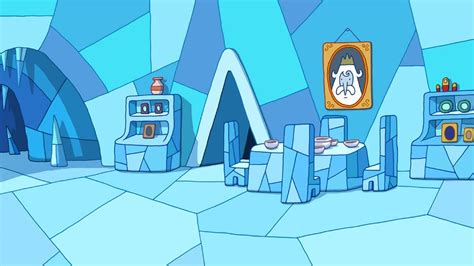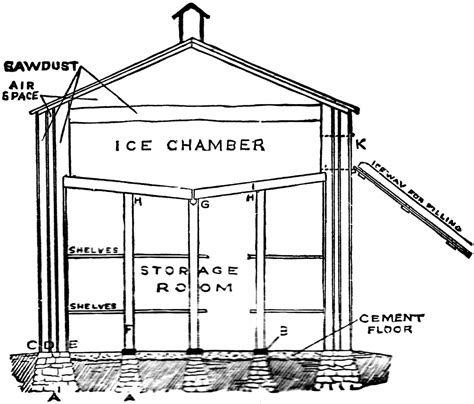frederick tudor | saltpeter to make ice frederick tudor Admiral Sir Frederick Charles Tudor Tudor, KCB, KCMG (born Jones; 29 March 1863 – 14 April 1946) was a British Royal Navy officer who went on to be Third Sea Lord. CAR RENTAL RESERVATIONS. Looking to rent a car for an upcoming vacation or business trip? At Enterprise Rent-A-Car we make renting a car seamless so you can get right on your way.
0 · saltpeter to make ice
1 · ice king house
2 · how did pioneers make ice
3 · history of ice delivery
4 · frederick tudor ice merchant
5 · frederic tudor wikipedia
6 · frederic tudor ice for sale
7 · frederic tudor calcutta
LV Energy Systems Solutions, manufacturers smart products to reduce and manage energy consumption. The goal of LV Energy Systems is help our customer reduce electricity costs by reducing energy consumption. Cut Energy Usage and Maintenance while Increasing Employee Productivity and Safety.Electrons in energy level I (also called energy level K) have the least amount of energy. As you go farther from the nucleus, electrons at higher levels have more energy, and their energy increases by a fixed, discrete amount.
Learn how Frederic Tudor, a 22-year-old Bostonian, became the world's leading ice merchant in the 19th century. Discover how he shipped ice from New Engla.

Admiral Sir Frederick Charles Tudor Tudor, KCB, KCMG (born Jones; 29 March 1863 – 14 April 1946) was a British Royal Navy officer who went on to be Third Sea Lord.Learn how Frederic Tudor invented the commercial ice industry in the 19th century, shipping ice from Boston to the Caribbean and India. Discover how his innovation improved lives and .
From the time he first shipped lake ice to the West Indies in 1806 to the beginnings of the Calcutta trade in the 1830s, he clung to one conviction: people living in tropical climates .
Frederic Tudor came up with an idea that was widely ridiculed 200 years ago: he would harvest ice from New England's frozen ponds and ship it to islands in the Caribbean. One man in particular, the Boston businessman Frederic "The Ice King" Tudor, engineered the change during the first half of the 1800s. Known for his pigheadedness as . Learn about the life and business of Frederic Tudor, who cut and shipped ice from New England to distant markets in the 18th and 19th centuries. Read excerpts from his diaries .
April 13, 2003. The idea sounds fanciful: harvest ice in Massachusetts and sell it to people in the tropics. But the nineteenth-century entrepreneur Frederic Tudor was immune to ridicule and.Frederic Tudor, The Ice King. In the first years of the nineteenth century, Frederic Tudor pursued what everyone thought was a crazy idea—he believed he could make money by selling ice to . Tudor’s death in 1864 and development of new ice manufacturing processes started the decline of the American ice trade in Calcutta. With the establishment of the Bengal Ice Company in 1878 and Crystal Ice Company shortly thereafter, good quality ice was locally available. The Calcutta Ice Company, once an object of pride, was demolished in 1882.
Tudor would be stunned at where his ambition has led, and probably find it pretty cool. About the Author. Reid Mitenbuler is a writer living in Washington, DC. More Stories.Frederic Tudor (September 4, 1783 – February 6, 1864) was an American businessman and merchant. Known as Boston's "Ice King", he was the founder of the Tudor Ice Company and a pioneer of the international ice trade in the early 19th century. He made a fortune shipping ice cut from New England ponds to ports in the Caribbean, Europe, and as far away as India and .Frederick Tudor “The Ice King of New England” was one of the most prominent Boston merchants in the early 19th century. Beginning in 1805, Tudor harvested ice from across Massachusetts at places including Haggett's Pond in Andover, Spy Pond in Arlington, Sandy Pond in Ayer, Fresh Pond in Cambridge, Walden Pond in Concord, Suntaug Lake in Lynnfield, Spot Pond and . In the early 1800s, Bostonian Frederick Tudor had a radical vision – to ship frozen New England water across oceans to the tropics. Tudor pioneered the global ice trade despite being called “crazy.” We have an EXCLUSIVE interview with Frederick. This is a story of how one man’s far-fetched idea built an unlikely empire and forever .
In 1806, at the ripe age of 23, Frederick Tudor sent his first shipment of ice from Boston to the small island of Martinique(MAR-tin-EEK) in the Caribbean.The idea was to provide people working in the hot Caribbean sun with cold, Massachusetts ice, which he had cut out of the rivers around his fathers farm.Frederick Tudor (1783–1864) founder of the Natural Ice Trade was known as the “Ice King.” Tudor came from a wealthy Boston family; instead of following in his brother’s footsteps and going to Harvard, he quit school at age 13. An ambitious young man he worked on the family farm and in the Boston harbor.
saltpeter to make ice
[p.157] The founder of this foreign ice business, which has now attained such large proportions, was a Boston merchant named Frederick Tudor, son of that Colonel William Tudor who studied law under John Adams, and who served his country on the staff of General Washington, and afterwards became a judge. Frederick Tudor, who was born in 1783, the .___Frederic Tudor was a striking example of nineteenth century individualism in its American form.What he created was the work of his own hand, even as the achievement of an artist is, and, like an artist with a new message, he fought his way to fame sustained only by his belief in himself and by his iron resolution: "I have so willed it" was his motto. The very first license plate issued by a state government (Number 1) was issued on September 1, 1903, to Frederick Tudor of Brookline. Not only was Tudor just the right man at the right time, but he was working with the highway commission at the time and he just so happened to be the nephew of Henry Lee Higginson.Frederic Tudor was an American businessman and merchant. Known as Boston's "Ice King", he was the founder of the Tudor Ice Company and a pioneer of the international ice trade in the early 19th century. He made a fortune shipping ice cut from New England ponds to ports in the Caribbean, Europe, and as far away as India and Hong Kong.
herman miller buy houtson
Tudor, the hardened businessman, mounted a bitter campaign maligning Dr. Gorrie’s machine, even suggesting that artificial ice had germs in it! Gorrie lost the Ice War. He went bankrupt and died unrecognised. Statue of Dr. John Gorrie. But the technology could not be stopped. By the 1860s, better ice-makers came up, and the natural ice .Frederick Tudor, first American ice millionaire, whose papers are in Baker Library at Harvard University. The Tudor papers embrace deal-ings and shipment of natural ice to southern United States ports, across the equator, and throughout the world. Some factors which made for the decline of the natural ice trade and the growth of installations of
Frederick Tudor (1783–1864) founder of the Natural Ice Trade was known as the “Ice King.” Tudor came from a wealthy Boston family; instead of following in his brother’s footsteps and going to Harvard, he quit school at age 13. An ambitious young man he worked on the family farm and in the Boston harbor.
buying hermes in paris airport
ice king house
Frederic Tudor (September 4, 1783 – February 6, 1864) was an American businessman and merchant. Known as Boston's "Ice King", he was the founder of the Tudor Ice Company and a pioneer of the international ice trade in the early 19th century. The idea of selling ice to the uncomfortably hot tropics was the inspiration of a 22-year-old Bostonian named Frederic Tudor who, in 1806, loaded a ship with 130 tons of Massachusetts ice.Admiral Sir Frederick Charles Tudor Tudor, KCB, KCMG (born Jones; 29 March 1863 – 14 April 1946) was a British Royal Navy officer who went on to be Third Sea Lord. [1]

Frederic Tudor invented the commercial ice industry, cementing his place alongside the bottlers of Evian, the brand that started the imported water craze, and Russ Williams, a pioneer.
From the time he first shipped lake ice to the West Indies in 1806 to the beginnings of the Calcutta trade in the 1830s, he clung to one conviction: people living in tropical climates would pay a good price for ice if they could get it. Frederic Tudor came up with an idea that was widely ridiculed 200 years ago: he would harvest ice from New England's frozen ponds and ship it to islands in the Caribbean. One man in particular, the Boston businessman Frederic "The Ice King" Tudor, engineered the change during the first half of the 1800s. Known for his pigheadedness as much as his marketing savvy,.
At the center of this booming industry was a successful entrepreneur, Frederick Tudor, better known as the "Ice King." The Tudor Ice Company owned icehouses in Calcutta, Madras, Bombay, Galle, Singapore, Jamaica, Havana, New Orleans, and Charleston.
April 13, 2003. The idea sounds fanciful: harvest ice in Massachusetts and sell it to people in the tropics. But the nineteenth-century entrepreneur Frederic Tudor was immune to ridicule and.
how did pioneers make ice

simptomātiskās (pieres, deniņu, paura, pakaušu daivas epilepsija); kriptogēnās. Ģeneralizēta epilepsija: idiopātiskā (tai skaitā bērnu un juvenilās absances epilepsija); simptomātiskā; kriptogēnās. Nedeterminētas epilepsijas. Īpaši sindromi (piemēram, febrilie krampji, akūtie metabolie krampji un citi).
frederick tudor|saltpeter to make ice



























